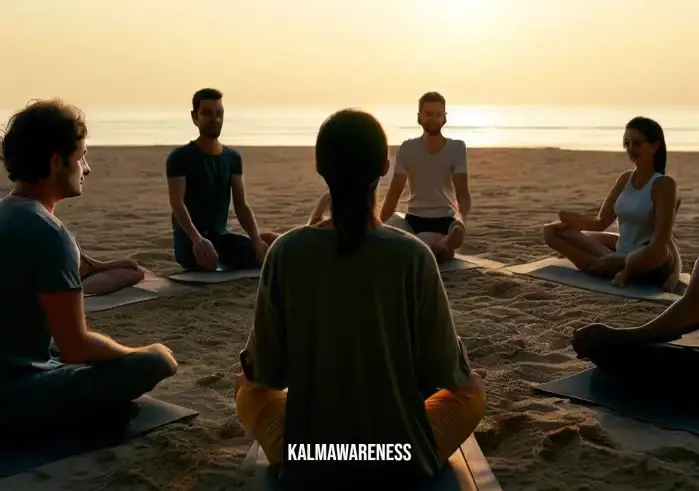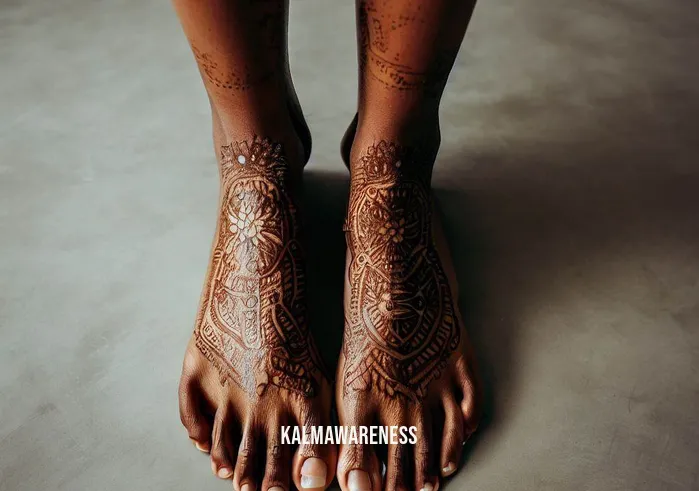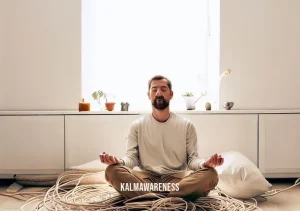Mastering the Yoga Wheel Pose for Beginners
| Description | Explanation |
|---|---|
| Pose Name | Yoga Wheel Pose for Beginners |
| Original Name | Chakrasana (Sanskrit: चक्रासन) |
| Difficulty Level | Intermediate |
| Pose Category | Backbend Pose |
| Exercise Duration | Hold for 30 seconds to 1 minute (Beginners), Hold for 1 to 2 minutes (Advanced) |
Yoga is not merely a physical exercise but a holistic practice that unites the body, mind, and soul. Among the myriad of yoga poses, the Yoga Wheel Pose, also known as Chakrasana, stands out as an exhilarating and empowering backbend that offers numerous benefits for practitioners. In this article, we will dive deep into the art of mastering the Yoga Wheel Pose, particularly focusing on beginners who seek to explore this majestic pose and experience its transformative effects.
Introduction to the Yoga Wheel Pose
The Yoga Wheel Pose is a beautiful asana that resembles the shape of a wheel, hence its name. This pose is revered for its heart-opening qualities, which encourage vulnerability and courage while stimulating the heart chakra. It is an intermediate-level backbend, so it is crucial for beginners to approach it with mindfulness, patience, and proper guidance.
Benefits of Yoga Wheel Pose
Before we delve into the step-by-step guide, let’s explore the incredible benefits of the Yoga Wheel Pose:
- Heart Opening: As you arch your spine and lift your chest, the Yoga Wheel Pose creates a profound heart-opening experience, promoting feelings of love, compassion, and emotional release.
- Strengthens the Spine: The pose strengthens the entire spine, enhancing flexibility and mobility in the back.
- Increases Flexibility: Chakrasana stretches the shoulders, chest, abdomen, and hip flexors, improving overall body flexibility.
- Stimulates Digestive Organs: The gentle compression on the abdomen stimulates digestive organs, aiding digestion.
- Therapeutic for the Lungs: The deep expansion of the chest improves lung capacity and may help with respiratory issues.
- Energizing: Yoga Wheel Pose invigorates the body and mind, relieving fatigue and promoting a sense of vitality.
Step-by-Step Guide to Yoga Wheel Pose
Let’s now walk through the process of mastering the Yoga Wheel Pose step by step:
Preparation: Warm-up Exercises
Before attempting the Yoga Wheel Pose, it’s essential to prepare your body with some warm-up exercises. Engage in gentle stretches focusing on the spine, shoulders, and hip flexors. Some recommended warm-up poses include:
- Cat-Cow Pose (Marjaryasana-Bitilasana): This gentle flow warms up the spine and prepares it for deeper backbends.
- Bridge Pose (Setu Bandha Sarvangasana): Bridge pose helps open the chest and stretch the spine.
Step 1: Placing the Yoga Wheel
- Begin by sitting on your yoga mat with your knees bent and feet flat on the floor. Place the Yoga Wheel behind your hips, perpendicular to your spine.
- Gradually lean back and position your hands behind your shoulders, fingers pointing towards your feet. Your fingertips should be aligned with the Yoga Wheel.
Step 2: Lifting the Hips and Chest
- Press firmly into your hands and feet, engaging your core muscles.
- Inhale deeply and lift your hips off the mat, pushing them towards the ceiling.
- As you continue to lift your hips, simultaneously arch your spine, allowing your head to drop gently backward.
- Support your body weight evenly between your hands and feet, finding balance on the Yoga Wheel.
Step 3: Finding Stability
- Once in the pose, check your alignment. Ensure your knees and feet are hip-width apart, and your toes point straight ahead.
- Keep your thighs and feet parallel to each other to maintain balance.
- Draw your shoulder blades towards each other and open your chest, deepening the backbend.
Step 4: Holding the Pose
- Hold the Yoga Wheel Pose for 30 seconds to 1 minute as a beginner. With practice, gradually extend the duration to 1 to 2 minutes.
- Focus on breathing deeply and calmly, relaxing any tension in your body.
Step 5: Coming Out of the Pose
- To release the pose, exhale and slowly lower your hips back to the mat.
- Rest for a few breaths in Child’s Pose (Balasana) to counterpose the backbend.

Yoga Wheel Pose for Beginners: Embrace the Benefits and Explore Variations
In the first part of our journey, we explored the foundational aspects of the Yoga Wheel Pose, also known as Chakrasana, and learned how to gracefully enter and hold the pose. Now, let’s delve deeper into the many benefits this heart-opening pose offers, discover who should approach it with caution, and explore variations suitable for practitioners of different experience levels.
Benefits of the Yoga Wheel Pose
The Yoga Wheel Pose is not just a visually stunning posture; it offers a plethora of physical, mental, and emotional benefits. Let’s explore some of these remarkable advantages:
- Spinal Flexibility: As you arch your back deeply in the Yoga Wheel Pose, you enhance the flexibility of your entire spine, making it more supple and agile.
- Strengthening the Muscles: This backbend engages and strengthens various muscles, including the back muscles, glutes, and core.
- Improved Posture: By opening the chest and shoulders, the pose promotes better posture and counteracts the effects of prolonged sitting and hunching over electronic devices.
- Stimulates the Nervous System: The deep backbend stimulates the nervous system, invigorating the body and mind.
- Boosts Confidence: As you embrace vulnerability and openness in the Yoga Wheel Pose, it helps boost self-confidence and self-esteem.
- Energizing and Uplifting: Practicing this pose can elevate your mood and leave you feeling energized and revitalized.
- Heart Chakra Activation: The heart-opening aspect of the pose stimulates the heart chakra, fostering feelings of love, compassion, and empathy.
- Digestive Health: The gentle compression on the abdomen massages the digestive organs, improving digestion.
Who Should Avoid the Yoga Wheel Pose
While the Yoga Wheel Pose offers numerous benefits, it may not be suitable for everyone. Individuals with the following conditions or issues should approach the pose with caution or avoid it altogether:
- Back Injuries: If you have a history of back injuries or chronic back pain, consult a qualified yoga instructor or healthcare professional before attempting this pose.
- Neck Injuries: People with neck injuries or issues should avoid dropping their head back in the pose to prevent further strain on the neck.
- High Blood Pressure: The intense backbend can raise blood pressure levels, so those with high blood pressure should practice the pose with caution and under supervision.
- Pregnancy: Pregnant individuals should avoid deep backbends like the Yoga Wheel Pose, as it may not be safe during pregnancy.
- Carpal Tunnel Syndrome: If you have wrist issues or carpal tunnel syndrome, practice with modifications or avoid the pose to prevent aggravating the condition.
- Recent Surgery: Those who have undergone recent abdominal or back surgery should avoid this pose until they have fully recovered.
Variations of the Yoga Wheel Pose
The beauty of yoga lies in its versatility and adaptability. The Yoga Wheel Pose can be modified to suit practitioners of different experience levels. Here are some variations that you can explore:
1. Supported Bridge Pose
For beginners who are not yet ready for the full expression of Chakrasana, the Supported Bridge Pose provides a gentler backbend. Use a yoga block or a rolled-up towel placed under the sacrum to support the back as you lift the hips.
2. Feet Hip-Width Apart
As you advance in your practice, try widening your feet to hip-width apart in the Yoga Wheel Pose. This variation offers more stability and balance.
3. One-Legged Wheel Pose
Once you feel comfortable in the regular Yoga Wheel Pose, you can experiment with lifting one leg off the mat. This variation challenges your balance and strength.
4. Eka Pada Chakrasana
For seasoned practitioners, Eka Pada Chakrasana involves lifting one leg and extending it straight up towards the ceiling while maintaining the backbend.
5. Drop-Back Wheel Pose
The Drop-Back Wheel Pose is an advanced variation where you gracefully drop back from a standing position into Chakrasana, showcasing incredible flexibility and control.

Yoga Wheel Pose for Beginners: Unraveling the History and Spiritual Significance
In our previous chapters, we explored the fundamentals, benefits, and variations of the enchanting Yoga Wheel Pose. As we continue our journey into the heart of this magnificent asana, let’s delve into its fascinating history, the spiritual significance it holds, and essential tips to enhance your practice. Additionally, we will shed light on common mistakes to avoid and provide modifications for those with injuries or limited flexibility. Lastly, we’ll discover other poses that beautifully complement the Yoga Wheel Pose.
The History of Yoga Wheel Pose
The origins of the Yoga Wheel Pose can be traced back to the ancient practice of yoga in India. Historically, this pose was not a prominent part of traditional Hatha Yoga sequences but emerged later as modern yoga evolved. The concept of using props, such as a wheel or chakrasana prop, to support and deepen yoga poses gained popularity with the advent of contemporary yoga styles.
The Spiritual Significance of Chakrasana
Beyond the physical benefits, the Yoga Wheel Pose holds spiritual significance that transcends the physical realm. Chakrasana is closely associated with the heart chakra, or Anahata in Sanskrit. This energy center is believed to govern love, compassion, forgiveness, and emotional healing. As you open your heart in Chakrasana, you are said to unlock feelings of unconditional love and connect with the essence of your being.
Tips for Getting the Most Out of the Yoga Wheel Pose
To make the most of your Yoga Wheel Pose practice, consider the following tips:
- Warm-up Adequately: Prioritize a thorough warm-up before attempting Chakrasana to ensure your body is adequately prepared for the backbend.
- Listen to Your Body: Honor your body’s limitations and avoid pushing yourself beyond your comfortable range of motion.
- Engage Core Muscles: Throughout the pose, engage your core to support your lower back and maintain stability.
- Breathe Mindfully: Focus on deep, steady breaths to enhance your mind-body connection and create a sense of calm.
- Use Props: Utilize props like yoga blocks or a cushion under your head for added support and comfort.
Common Mistakes to Avoid
In the pursuit of mastering the Yoga Wheel Pose, beginners may encounter some common pitfalls. Be mindful of these mistakes and work to avoid them:
- Overarching the Lower Back: Avoid excessive arching of the lower back, as it may strain the lumbar region.
- Tensing the Neck: Refrain from tensing your neck while dropping back into the pose. Instead, let your neck relax and extend naturally.
- Not Using the Legs: Engage your leg muscles to support the weight of your body during the backbend.
- Rushing into the Pose: Take your time to enter and exit the pose gracefully, avoiding sudden movements.
Modifications for Individuals with Injuries or Limited Flexibility
For those with injuries or limited flexibility, modifications can make the Yoga Wheel Pose more accessible:
- Half Wheel Pose: If a full backbend is challenging, try Half Wheel Pose by placing the hands and feet on the ground while lifting the hips and chest.
- Supported Backbend: Use a bolster or rolled-up blanket to support your back in the pose, reducing the intensity of the backbend.
Complementary Poses to Enhance Your Practice
To deepen your experience and explore the synergy between yoga poses, consider integrating the following complementary asanas:
- Cobra Pose (Bhujangasana): Cobra Pose is an excellent preparatory pose that opens the chest and strengthens the back.
- Camel Pose (Ustrasana): This backbend complements the heart-opening qualities of Chakrasana, offering a profound stretch to the entire front body.
Inviting the Reader to the Final Part
Congratulations on embarking on a transformative journey with the Yoga Wheel Pose! In the final part of this article, we will explore the profound spiritual connection of Chakrasana, the historical evolution of the pose, and its integration into modern yoga practices. Additionally, we’ll delve into the significance of heart chakra activation and provide a complete sequence that incorporates the Yoga Wheel Pose. So, let’s roll into the last part and embrace the culmination of our yoga odyssey!





